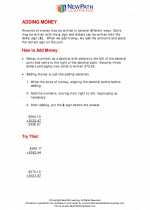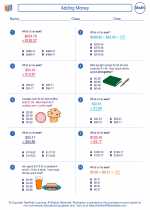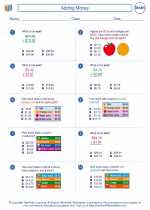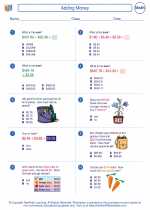Fractions
A fraction represents a part of a whole or a part of a group. It is written in the form of one number (numerator) over another number (denominator), separated by a horizontal line. For example, in the fraction 3/4, 3 is the numerator and 4 is the denominator.
Types of Fractions
Fractions can be classified into different types:
- Proper Fraction: A fraction where the numerator is less than the denominator, such as 2/5.
- Improper Fraction: A fraction where the numerator is greater than or equal to the denominator, such as 7/4.
- Mixed Number: A combination of a whole number and a proper fraction, such as 3 1/2.
- Equivalent Fractions: Fractions that represent the same part of a whole, such as 1/2 and 2/4.
Operations with Fractions
There are four basic operations that can be performed with fractions:
- Addition: To add fractions, the denominators must be the same. If they are not, find a common denominator and then add the numerators.
- Subtraction: Similar to addition, but subtract the numerators instead.
- Multiplication: Multiply the numerators together to get the new numerator, and multiply the denominators together to get the new denominator.
- Division: To divide fractions, multiply the first fraction by the reciprocal of the second fraction (flip the second fraction and then multiply).
Comparison of Fractions
When comparing fractions, if the denominators are the same, you can compare the numerators. If the denominators are different, you can find a common denominator and then compare the numerators.
Understanding fractions is important for many real-life situations, such as cooking, measuring, and dividing quantities into equal parts.
Remember that practice is key to mastering fractions, so keep practicing and solving problems to become more comfortable with them!
[Fractions] Related Worksheets and Study Guides:
.◂Math Worksheets and Study Guides Third Grade. Adding Money

 Worksheet/Answer key
Worksheet/Answer key
 Worksheet/Answer key
Worksheet/Answer key
 Worksheet/Answer key
Worksheet/Answer key
 Worksheet/Answer key
Worksheet/Answer key
